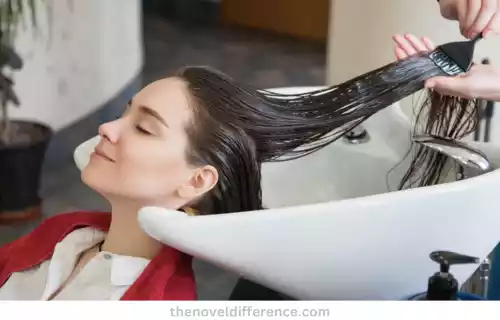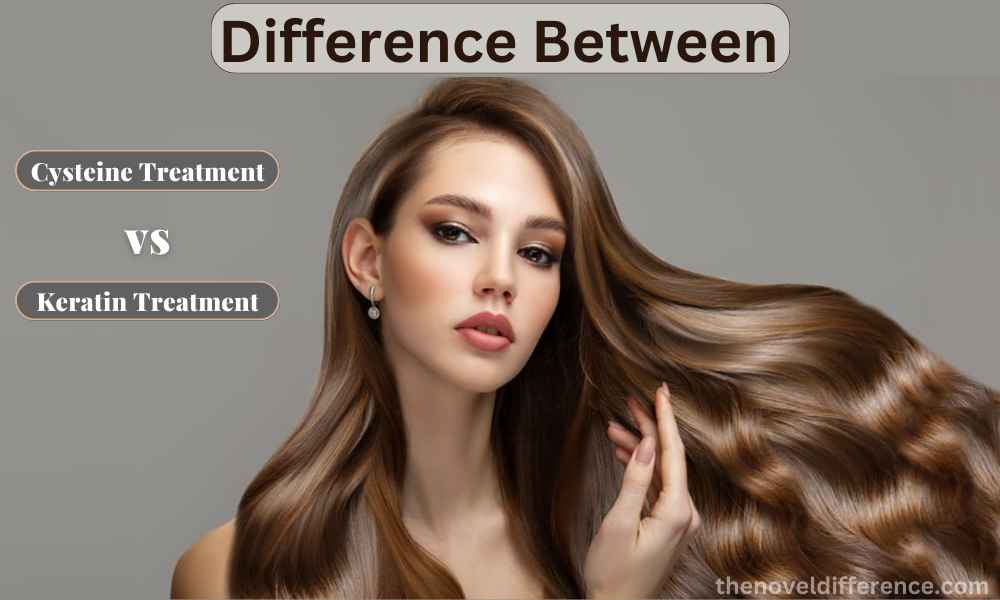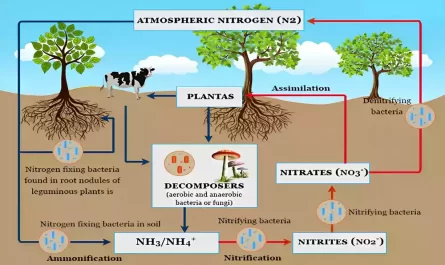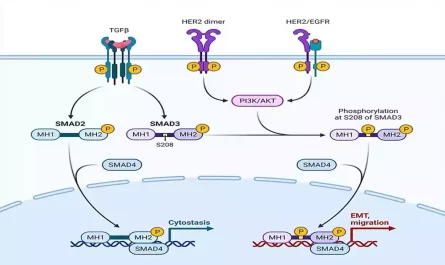Definitions for Keratin and Cysteine Treatment Options
Keratin Treatment: Keratin treatment is a chemical hair treatment designed to smooth, straighten and improve the overall condition of hair. The procedure requires applying a keratin-rich formulation which is then sealed onto hair using heat; its main component, keratin is naturally present in hair skin, and nails and works by infusing more of this protein into each strand, filling gaps between them and repairing damage while leaving behind smoother more manageable locks.
Cysteine Treatments: Additionally referred to as Cysteine Complex or Hair Smoothing treatments, Cysteine treatments aim to relax or straighten hair while simultaneously strengthening and conditioning it at the same time. They use cysteine-based solutions which break down and reshape existing bonds for a smoother appearance compared to natural curled locks; cysteine is an amino acid found within the hair that plays an essential part in this treatment; unlike its more extreme alternatives like Keratin treatments this form is typically conducted using lower heat settings during process compared with Keratin straightening methods which use higher heat settings; cysteine is considered more gentle straightening solution than its predecessor keratin treatments!
A brief explanation of hair treatments
Hair treatments refer to various procedures and products used to improve the health, appearance, and manageability of hair. These treatments can target specific hair concerns such as dryness, damage, frizz, and lack of shine.
Here are some common types of hair treatments:
- Conditioning Treatments: Conditioning treatments involve the use of deep conditioning masks, oils, or serums to nourish and hydrate the hair. They help replenish moisture, repair damage, and improve overall hair health.
- Keratin Treatments: Keratin treatments are chemical processes designed to add the natural protein found within hair shafts; known as keratin. These treatments help smoothen and straighten the hair, reduce frizz, and enhance shine and manageability.
- Cysteine Treatments: Cysteine treatments use cysteine, an amino acid found in hair, to relax or straighten the hair while improving its strength and condition. These treatments provide a milder alternative to traditional straightening methods.
- Hair Masks: Hair masks are intensive treatments applied to the hair to address specific concerns such as dryness, damage, or lack of volume. They often contain nourishing ingredients to provide deep hydration, and repair, and rejuvenate the hair.
- Treatments to Improve Scalp Health: Scalp treatments focus on maintaining and improving its health to support hair growth in an organic fashion. These treatments can address issues like dryness, itchiness, dandruff, or excess oil production.
- Color Treatments: Color treatments involve the application of hair dyes, highlights, or lowlights to change or enhance hair color. These treatments may be permanent, semi-permanent, or temporary depending on your desired result.
- Protein Treatments: Protein treatments are designed to strengthen and repair damaged hair by replenishing the hair’s protein content. These treatments often contain ingredients like hydrolyzed keratin, collagen, or other proteins to restore hair strength and elasticity.
- Hot Oil Treatments: Hot oil treatments involve the application of heated oils to the hair and scalp. This treatment helps moisturize and nourish the hair, improve its texture, and add shine.
- Anti-Frizz Treatments: Anti-frizz treatments aim to control and reduce frizz in the hair. These treatments typically involve the use of specialized serums, sprays, or smoothing products to create a sleek and polished look.
Keep in mind that the results of hair treatments depend heavily upon individual characteristics like hair type, condition, and treatments used. Consulting with a professional stylist or trichologist can help determine the most suitable treatment for your hair concerns.
Importance of hair care and maintenance
Haircare and maintenance are essential to your locks’ overall health, appearance, and lifespan.
Here are some key reasons why hair care and maintenance are important:
- Healthy Hair Growth: Regular care and maintenance practices help create an optimal environment for healthy hair growth. Maintain a clean, well-nourished scalp free from excessive product buildup or blocked follicles to promote strong, thick, and vibrant hair growth.
- Prevention of Damage: Proper hair care can help prevent damage caused by various factors such as heat styling, chemical treatments, environmental pollutants, and harsh hair products. Condition, moisturize, and protect to reduce hair breakage, split ends, and other forms of damage.
- Maintenance of Hair and Scalp Health: Consistent hair care routines contribute to maintaining the overall health of both the hair and scalp. A clean and balanced scalp helps prevent issues like dandruff, itching, and excessive oiliness. Well-nourished hair is more resilient, softer, and resistant to drying out or becoming brittle than its counterpart.
- Improved Manageability and Styling: Proper hair care practices, such as regular shampooing, conditioning, and detangling, enhance the manageability of your hair. Well-maintained hair is easier to style, comb, and manipulate into various desired looks.
- Enhancing Appearance and Confidence: Healthy, well-groomed hair can significantly enhance your overall appearance and boost your confidence. Shiny, lustrous, and well-styled hair can make you feel more put together and attractive.
- Prevention of Common Scalp Conditions: Regular hair maintenance can help avoid common scalp disorders like dandruff, seborrheic dermatitis, and infections on your scalp. Maintain a clean and balanced scalp to lower the risk of conditions that cause discomfort or endanger your hair’s health.
- Preservation of Hair Color and Treatments: If you color your hair or undergo any chemical treatments, proper hair care becomes even more crucial. Using suitable products, protecting your hair from excessive heat, and following recommended aftercare instructions can help preserve the vibrancy and longevity of your color or treatment.
- Early Detection of Hair and Scalp Issues: Regular care and maintenance routines involve close observation of your hair and scalp. This allows you to notice any changes, such as excessive hair loss, scalp irregularities, or changes in hair texture. Early detection of such issues can prompt timely intervention and treatment.
Establish and adhere to a consistent hair care routine that includes gentle cleansing, conditioning, protection, and nourishment to preserve and extend its health, vitality, and beauty.
It is also beneficial to consult with hair professionals for personalized guidance and advice based on your specific hair type and concerns.
Keratin Treatment
Keratin treatment is a popular hair treatment that aims to smooth, straighten, and improve the overall condition of the hair.
Here are some key aspects of keratin treatment:

- Process: Keratin treatment typically involves several steps. First, the hair is shampooed to remove any product buildup and impurities. Then, a keratin-rich formula is applied to the hair, coating each strand. The hair is then blow-dried and flat-ironed to seal in the keratin and create a smooth, straightened effect. The entire process may take a few hours, depending on the length and thickness of the hair.
- Keratin: A protein found in hair, nails, and skin. It is responsible for providing strength, structure, and elasticity to the hair. During the treatment, the keratin formula penetrates the hair shaft, filling in gaps and repairing damage. This treatment helps smooth out hair cuticles and eliminate frizz for straighter and easier manageability.
- Benefits: Keratin treatments offer several benefits for those seeking smoother, more manageable hair. These benefits include:
-
- Reduction of frizz and flyaways: Keratin treatment helps to control and minimize frizz, making the hair more smooth and sleek.
- Straightening effect: Keratin treatment can relax the hair’s natural curl or wave pattern, resulting in straighter hair.
- Enhanced shine and smoothness: The treatment can improve the hair’s shine, making it appear healthier and more lustrous.
- Long-lasting results: Keratin treatments can provide semi-permanent results that can last for several months, depending on the hair type and aftercare.
- Potential Drawbacks: It is important to consider some potential drawbacks of keratin treatment:
-
- Use of formaldehyde-based products: Some keratin treatments contain formaldehyde or chemicals that release formaldehyde when heated. Formaldehyde has been associated with health concerns, so it is essential to choose formaldehyde-free or low-formaldehyde formulas.
- Chemical odor: During the treatment process, there may be a strong chemical odor due to the products used. Adequate ventilation is necessary during the treatment.
- Limited effectiveness on severely damaged hair: Keratin treatments may not provide the desired results on severely damaged or extremely porous hair. In such cases, it is recommended to address the underlying hair damage before undergoing a keratin treatment.
- Aftercare and Maintenance: After the treatment, it is crucial to follow specific aftercare instructions to maintain the results and prolong the longevity of the treatment. This may include avoiding washing or wetting the hair for a specified period, using sulfate-free shampoos and conditioners, and minimizing the use of heat styling tools.
Important to keep in mind is the variability of keratin treatments’ outcomes depending on an individual’s hair type, condition and which products were utilized during treatments.
Professional hairstylists who specialize in Keratin treatments can assist in selecting the most effective regimen and providing personalized guidance tailored specifically for you and your hair needs.
Cysteine Treatment
Cysteine Treatment (or Cysteine Complex or Hair Smoothing treatment), commonly referred to as Cysteine Hair Straightening treatment, aims at relaxing or straightening hair while strengthening it from within and improving its strength and condition.
Here are some key aspects of cysteine treatment:

- Process: Cysteine treatment involves a multi-step process. First, the hair is thoroughly cleansed with a clarifying shampoo to remove any buildup and prepare it for treatment. Then, a cysteine-based solution is applied to the hair, coating each strand. The solution works by breaking down the hair’s natural bonds and reshaping them into a straighter form. Heat is then applied to seal in the new shape, followed by a neutralizer to set the hair in its straightened state. Finally, the hair is rinsed and styled.
- Cysteine: Cysteine is an amino acid commonly present in hair. It is responsible for the formation of disulfide bonds, which contribute to the hair’s structure and strength. In cysteine treatment, the cysteine-based solution helps to temporarily break down and reshape these bonds, resulting in a smoother and straighter appearance.
- Benefits: Cysteine treatment offers several benefits for individuals looking to achieve straighter hair or reduce frizz:
-
- Natural and protein-based formula: Cysteine treatment is generally considered milder and more natural compared to other chemical straightening treatments, as it relies on the natural properties of cysteine.
- Gentle on the hair and scalp: Cysteine treatment is generally less harsh on the hair compared to some other straightening treatments, minimizing the risk of excessive damage or breakage.
- Restores and strengthens hair from within Cysteine treatment: helps to improve the hair’s condition by replenishing cysteine and reinforcing the hair’s structure, resulting in stronger and healthier-looking hair.
- Customizable results: Cysteine treatment can be tailored to achieve different levels of straightening, from a relaxed look to a more sleek and straight appearance.
- Potential Limitations: It’s important to consider a few potential limitations of cysteine treatment:
-
- Results may not be as long-lasting as keratin treatment: While cysteine treatment can provide semi-permanent results, the straightening effects may gradually diminish over time, requiring touch-ups or subsequent treatments.
- Use of heat during the treatment process: Cysteine treatment typically involves the use of heat, such as a flat iron, to seal in the straightened shape. It’s important to ensure proper heat protection and use caution during this process.
- Not suitable for extremely curly or coarse hair types: Cysteine treatment may not be as effective in completely straightening extremely curly or coarse hair types. In such cases, additional treatments or alternative methods may be necessary.
- Aftercare and Maintenance: Following cysteine treatment, it is important to follow specific aftercare instructions provided by your stylist. This may include avoiding washing or wetting the hair for a specific period, using sulfate-free shampoos and conditioners, and minimizing the use of heat styling tools to maintain straightened results.
As with any chemical hair treatment, professional cysteine treatment requires consultation with a hairstylist experienced in its administration in order to assess your hair type, and condition and determine the most efficient approach toward reaching desired outcomes.
Comparison between Keratin and Cysteine Treatments
When comparing keratin and cysteine treatments, there are several factors to consider. Here’s a comparison between these two popular hair treatments:
- Composition and Active Ingredients:
-
- Keratin Treatment: Keratin treatments use a keratin-rich formula to infuse the hair with additional keratin protein. The main goal is to repair and strengthen the hair by filling in gaps and smoothing the hair cuticles.
- Cysteine Treatment: Cysteine treatments consist of using solutions with cysteine as the active ingredient; cysteine is an amino acid commonly present in hair that serves to strengthen its structure and condition it further. The treatment works by temporarily breaking down and reshaping the hair’s natural bonds.
- Straightening and Smoothing Effects:
-
- Keratin Treatment: Keratin treatments are known for their straightening effects, reducing frizz and creating smoother, more manageable hair. The results can range from a relaxed, looser curl pattern to straight hair, depending on the individual’s hair type and desired outcome.
- Cysteine Treatment: Cysteine treatments can also provide straightening effects but tend to offer a more natural look. The treatment can relax the hair’s natural curl or wave pattern, resulting in a smoother appearance with reduced frizz.
- Longevity and Durability:
-
- Keratin Treatment: Keratin treatments typically offer longer-lasting results compared to cysteine treatments. Keratin treatments typically last three to six months depending on an individual’s hair type and maintenance routine.
- Cysteine Treatment: Cysteine treatments generally provide semi-permanent results that last for a shorter duration compared to keratin treatments. The effects typically last around two to four months, again depending on individual hair characteristics and maintenance.
- Processing Time:
-
- Keratin Treatment: Keratin treatments often require a longer processing time compared to cysteine treatments. Duration of treatment may range anywhere from several hours to days depending upon hair length and thickness.
- Cysteine Treatment: Cysteine treatments typically have a shorter processing time compared to keratin treatments. Treatment typically can be completed within several hours.
- Hair Type and Condition Considerations:
-
- Keratin Treatments: Keratin treatments can benefit hair types of all varieties, including frizzy, wavy, or curly locks. However, severely damaged or extremely porous hair may not achieve the desired results with a keratin treatment.
- Cysteine Treatment: Cysteine treatments are suitable for various hair types, but they may not be as effective on extremely curly or coarse hair. The treatment works best on mildly to moderately curly hair types.
Notably, individual results may depend on factors like hair type and condition as well as specific products and techniques used. Consultation with an expert stylist specializing in these treatments is advised for optimal results and to determine what would work best.
Compositional differences exist among active ingredients present
Compositional differences exist among active ingredients present, making their active usage invariant to differences between compositional versions.
Keratin and cysteine treatments vary significantly with regard to their composition, active ingredients, and protein sources used; here is an outline of these differences:
Keratin Treatments:
Composition: Keratin treatments typically consist of keratin protein, an abundant structural protein found naturally in hair, skin, and nails. They aim to replenish and reinforce protein structures within hair protein structures to repair damage while increasing strength.
Cysteine Treatment: Composition: Cysteine treatments incorporate cysteine, an amino acid naturally present in hair that plays a vital role in disulfide bond formation to give structure and strength to locks. Temporarily breaking these bonds to give hair a more straightened appearance is the goal here; temporarily breakage of disulfide bonds temporarily relieved during this treatment to achieve that aim.
While both treatments aim to enhance hair’s condition and appearance, keratin treatments specialize in replenishing and strengthening existing keratin protein while cysteine treatments aim to reshape natural bonds using cysteine amino acid as their sole tool for rejuvenation.
Note that formulations and ingredients vary between brands and manufacturers; to gain an in-depth knowledge of your keratin or cysteine treatment product’s composition and active ingredients it’s advisable to read product labels or consult a professional stylist.
Keratin vs Cysteine Treatment in Tabular Form
Sure! Here’s a tabular comparison of Keratin and Cysteine treatments:
| Keratin Treatment | Cysteine Treatment | |
| Composition | Keratin protein, amino acids, and other proteins | Cysteine amino acid, additional ingredients |
| Primary Protein | Keratin | Cysteine |
| Straightening Effect | Straightens hair reduces frizz | Relaxes natural curl, reduces frizz |
| Smoothing Effect | Smoothens hair improves manageability | Smoothens hair improves manageability |
| Longevity | Lasts several months (up to 6 months) | Lasts a few months (2 to 4 months) |
| Processing Time | Longer processing time (several hours) | Shorter processing time (a few hours) |
| Suitable Hair Types | Various hair types, frizzy, wavy, curly | Mild to moderately curly hair types |
| Compatibility | Not suitable for severely damaged or porous hair | Not as effective on extremely curly or coarse hair |
| Active Ingredients | Hydrolyzed keratin, amino acids, proteins | Cysteine, conditioning agents, antioxidants |
Individual results and experiences may differ based on factors like hair type, condition, and the specific products utilized. Consultation with an experienced hairstylist is highly advised so as to find a treatment tailored specifically to meet individual needs and desired results.
Conclusion
Both keratin and cysteine treatments offer benefits for individuals looking to improve the condition and appearance of their hair. Keratin treatments primarily focus on replenishing and strengthening the hair’s keratin protein, resulting in straighter, smoother, and more manageable hair.
Cysteine treatments, on the other hand, utilize the amino acid cysteine to temporarily reshape the hair’s natural bonds, providing a relaxed and smoother look.
Keratin treatments generally offer longer-lasting results, ranging from a few months up to six months, while cysteine treatments provide semi-permanent results lasting around two to four months. The processing time for keratin treatments is typically longer compared to cysteine treatments.
Both treatments have their suitability considerations. Keratin treatments can effectively address different hair types, from frizzy to frizzies to coily coily locks; while cysteine treatments tend to work best on moderately to severely curly locks.




